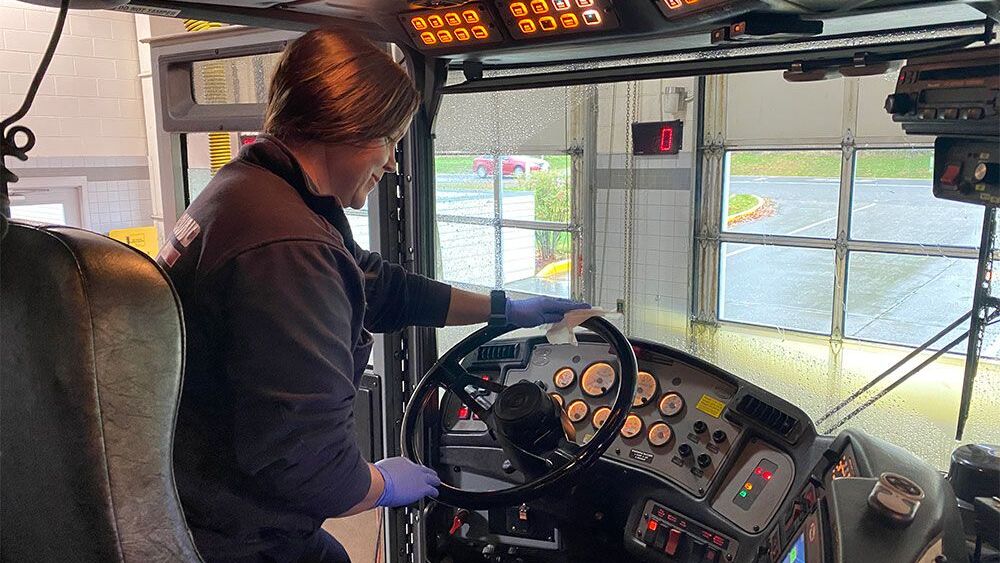By Gary Cochran
In my 41-year career, I have, unfortunately, lost many close firefighter brothers and sisters to cancer.
For so long, we looked at fighting fire as heroic, winning the battle when we extinguished the fire, not even considering the harmful carcinogens all around us. But as cancer rates rise, we now see the risks more clearly. As such, over the last five years, I have made it my personal initiative to help ensure that my firefighters are given the best equipment available to protect them from exposures to carcinogens and the other dangerous toxins we face every day.
NFPA has set the standards to ensure our members have the best PPE to protect them from the hazards found on the emergency scene. Where I feel we have missed the boat is inside our fire equipment – our apparatus – that we use multiple times a day responding to emergencies.
While I believe it would be impossible to make fire apparatus 100% carcinogen free, we must do more to embrace a cleaner or “cleanest cab” mindset, doing whatever we can to minimize the levels of harmful toxins found in our cabs. This is now my goal with my remaining years in the fire service – educating fire service personnel on the importance of clean cabs and hopefully seeing the concept come to fruition.
The clean cab concept focuses on apparatus cab design removes firefighting equipment that is commonly contaminated on the fireground to reduce off-gassing. The cab features a nonporous interior to reduce cross-contamination.
Clean cabs were first tested in Miami-Dade. The concept was to have all SCBA, hand tools and contaminated PPE stored in outside compartments to minimize the contaminates from being in the cab where firefighters would be exposed to these toxins. The cabs also integrated a HIIPA-type air purifying system within the HVAC to filter as much of the contaminates as possible so fire personnel were not breathing the contaminated air every time they were in the cab responding to calls or just out on district training.
The concept was implemented in different areas across the country, but after a while, firefighters pushed to go back to the traditional cabs, mainly because they felt there was a delay in getting ready for fireground action. I would argue that this the small delay could be advantageous for a fire officer to complete their 360 of the structure and create their incident action plan while the firefighters are donning SCBA and grabbing the tools they need.
I decided to investigate this further through informal studies at the station. The department was ordering a new clean cab engine, and I wanted to see for myself if the exterior equipment locations would have a significant impact on how long it took crews to go to work on scene. After conducting some timing drills related to equipment location, like SCBA in outside compartments, and having firefighters don their SCBA and grab the tools needed to start their task, we found that there was a 40-50-second delay if they had donned their SCBA and grabbed their tools outside the cab.
Additionally, I looked at the ergonomic aspect of having all your PPE, SCBA and tools on your body when exiting the cab area of the fire truck, and found an increase in the potential for injuries (i.e., back strains, slips, trips and falls). Exiting the fire apparatus without all the PPE and tools substantially reduced the potential for injuries and accidents.
I was ultimately able to show the engine committee that there was not a significant difference in time of readiness with the equipment on the outside, plus we could lower the potential for injuries exiting the truck without all the weight on members’ backs.
I believe that with training and familiarization of the apparatus, any firefighter could embrace the clean – or “cleanest” – cab concept, helping decrease our exposure to carcinogens and other contaminants.
As the fire chief, it is my duty to find ways to protect my personnel from these dangerous atmospheres. I hope and believe that as we continue to see the numbers of firefighters being diagnosed with cancer, fire chiefs, city administrations, councils and others will see how the clean cab movement could reduce the numbers of exposures and push for the concept to become a norm in across the country.
[Read more about clean cabs at the Fire Fighter Health and Safety Collaborative resource page]
About the author
Gary Cochran serves as the fire chief for the Sansom Park Fire Department in northern Texas. He has been in the fire service for 41 years.











